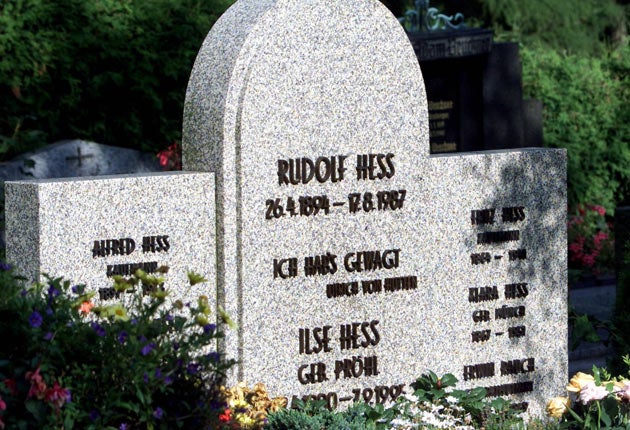Bones of Nazi Hess exhumed from 'pilgrimage' grave

The remains of Nazi leader Adolf Hitler's deputy Rudolf Hess have been exhumed from a grave in Bavaria after it became a pilgrimage for thousands of right-wing extremists.
A church official in the southern town of Wunsiedel said today that the tomb had been razed and its headstone removed after consulting with Hess's family over how to handle the grave site.
"The bones were removed and brought to the crematorium, and the ashes are to be scattered at sea," Peter Seisser said.
An early, fervent member of the Nazi party, Hess spent time in prison with Hitler in the early 1920s and helped edit Mein Kampf - the book in which the dictator outlined plans to destroy European Jewry and murder other groups he considered undesirable.
Hess parachuted into Scotland in May 1941 after a mysterious solo night flight, apparently on an unauthorised peace mission. He was captured and held prisoner until 1945 - briefly as one of the last prisoners in the Tower of London.
After World War Two, he was sentenced to life in prison at the Nuremberg war crimes trials, then hanged himself in Berlin's Spandau Prison on Aug. 17, 1987, at the age of 93.
Officials granted his wish to be buried in Wunsiedel, but earlier this year started preparing the transfer of the remains elsewhere because extremists had treated the grave - on which the phrase "I dared" was engraved - as a shrine.
Many far-right groups say Hess did not commit suicide but was killed by British military guards in prison, and conspiracy theories about the Nazi, who was interested in the occult, abound.
Extremist groups often portray him as a martyr figure, and some from as far away as Oregon and California have organised memorials for him in the past, including a number of outdoor 'white power' rock concerts.
The annual pilgrimage of neo-Nazis in Wunsiedel peaked in 2004, when authorities say some 5,000 people came from across Europe, including left-wing counter protesters.
"Now, hopefully we can put it all behind us," deputy mayor Roland Schoeffel said. "We hope the phantom has left."
Reuters
Join our commenting forum
Join thought-provoking conversations, follow other Independent readers and see their replies
Comments